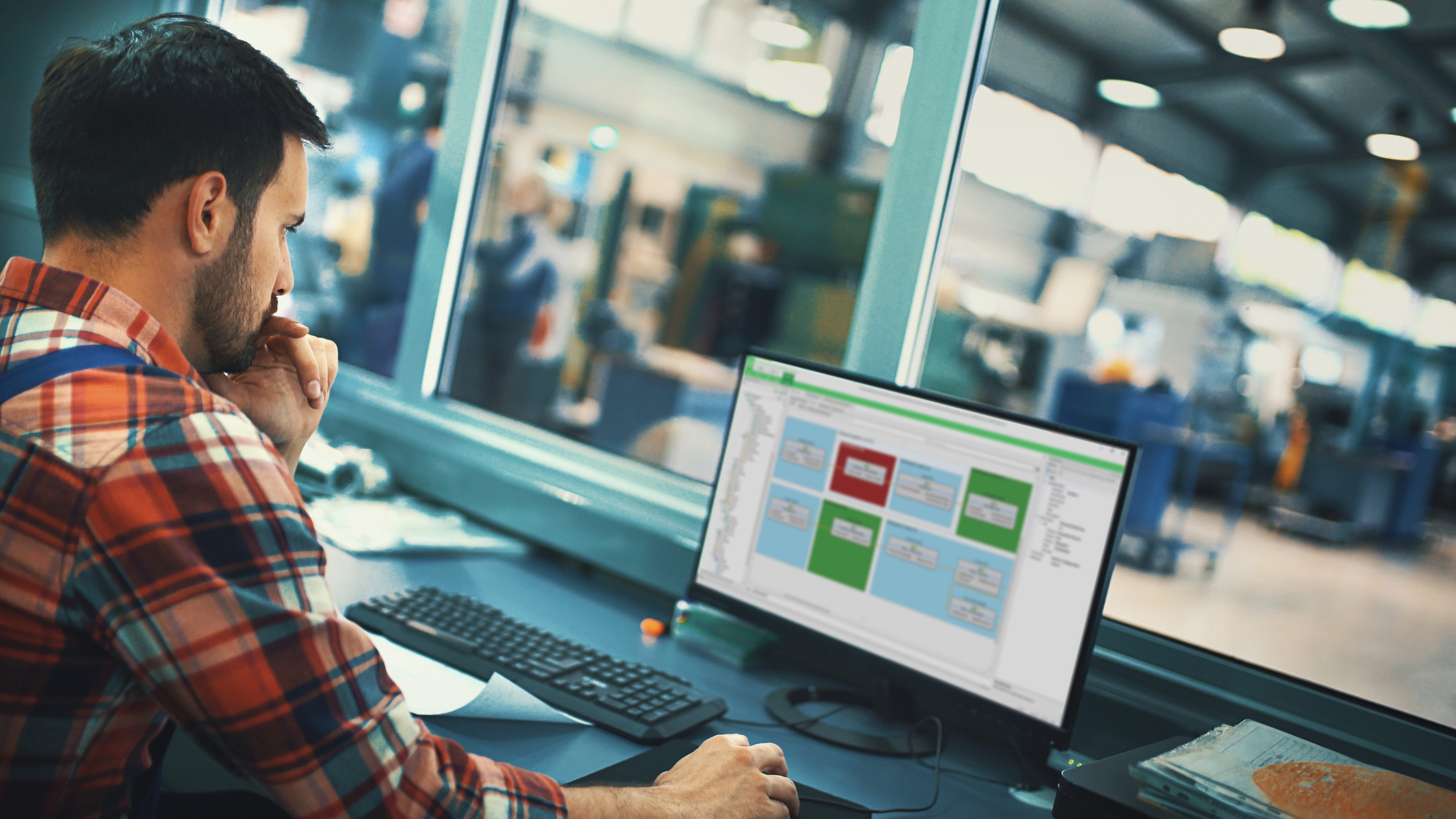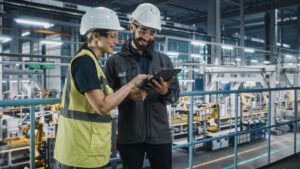
Today’s OEMs who build machines for industrial applications are at a critical crossroads. The way end users make purchasing decisions is altered by new marketplace influencers, including:
- Supply chain uncertainty
- How end users perceive OEM added value
- The convergence of IT and OT technologies
As a result, OEMs have to make important choices to remain competitive and generate future business growth. One option is to embrace brand-agnostic universal automation platforms such as Schneider Electric’s EcoStruxure Automation Expert.
While OEMs can “stay the course” to pursue traditional methods of designing, operating, and maintaining machines, this is an easier path to follow in the short term but introduces higher long-term risks.
On the other hand, OEMs can choose to gradually reinvent themselves to compete in a world where IT/OT convergence tools open new doors to machine-related services. Those services can enable new levels of client interactions and uncover new revenue sources.
How universal automation drives business value
To accommodate trends, OEMs are gradually shifting their business emphasis and priorities. Machine hardware differentiation is becoming less of an attainable goal while software and easy, open connectivity are driving the most significant potential for unique business value and accelerating services revenues.
End users embrace this software and services approach because it affords them more flexibility to solve problems and drive productivity using less hardware. End users see the machines as an object/asset that they can integrate within their entire process in a smooth plug & produce manner.
Consider the EcoStruxure Automation Expert platform. By enabling native IT/OT convergence, the platform utilizes software-defined, brand-agnostic virtual automation controllers, using Linux-based industrial PCs to deliver:
- Edge computing capabilities bring the second level of intelligence (e.g., machine learning, predictive quality, predictive maintenance, RT OEE, etc.)
- Opportunity to develop Advanced online services and remote support of field-based machines
- Predictive analysis of system performance using associated machines
This can be a potential game-changer for OEMs who access IT team resources. These tools address the long-standing desires of industrial end users for universal automation – the access to machine solutions where software is decoupled from hardware and this is seen by end users as an object.
End users enjoy the freedom and agility to shop for best-of-breed solutions without being tied down to any particular automation vendor (or automation technology provider).
Platforms like EcoStruxure Automation Expert offer an asset-centric (vs. PLC-centric) architecture that provides the means for digital transitions that facilitate machine design while increasing its agility and performance.
In fact, in a recent quantitative performance comparison study of four leading industrial automation vendor systems, EcoStruxure Automation Expert was found to be:
- more efficient in application development
- faster in troubleshooting
- more agility in application evolvement
OEMs benefits from universal automation
OEMs considering more open universal automation platforms can benefit from:
- Easy IT/OT interoperability – Tools like EcoStruxure Automation Expert offer native interoperability between the OT and IT worlds. An IT software application can easily be combined with a control logic application with no specific programming needed. This easy interoperability also applies to the easy integration of any Fieldbus protocol.
- “What if” scenario generation – EcoStruxure Automation Expert tools such as Soft dPAC can be used to create a virtual automation controller and combine it with a digital twin during the design phase of the machine. This virtual approach to testing can debug and size a machine ahead of time because it can use the data coming from the virtual automation controller. It can emulate the machine and use a digital approach to commissioning and testing, demonstrating simulations to the end users so that their preferences can be clearly and easily determined.
- Remote monitoring – Once the machine prototype is validated through simulations, the digital tools can be used to generate associated services. For example, machines can be remotely monitored on behalf of the end user (saving on OEM travel costs while generating supplementary revenues) until the machine’s end of life. During that time, remote diagnostics and remote maintenance activities can also be offered as services to address the entire machine life cycle.
In such an open and hardware agnostic environment, OEMs can shield themselves from the risk of locking into one vendor for their machine builds. If that particular vendor’s supply chain is constrained, the OEM can turn to sources where supply is available, thereby maintaining much-needed revenue streams without experiencing costly component delivery delays. The new universal automation platforms also allow OEMs to transition from a supplier relationship to an advisor relationship with their end users, which results in expanded long-term business.
For more information
Schneider Electric supports OEMs who choose to transition to the more open universal automation approach by offering proof of concept support, free training on the EcoStruxure Automation Expert platform, and programming of their IPC. To learn more, download our new white paper “EcoStruxure Automation Expert – A Quantitative Comparison of Digitized Industrial Automation Systems.”



